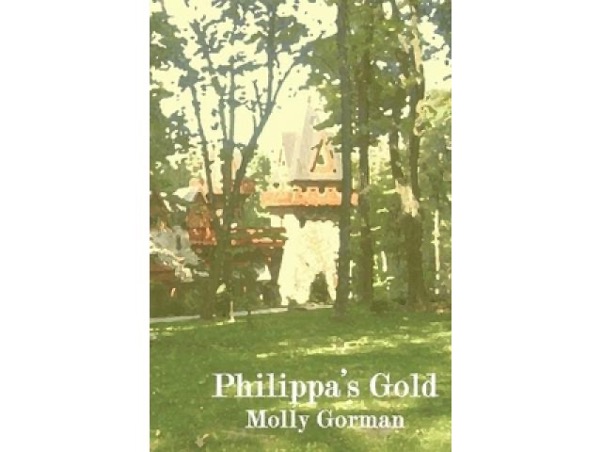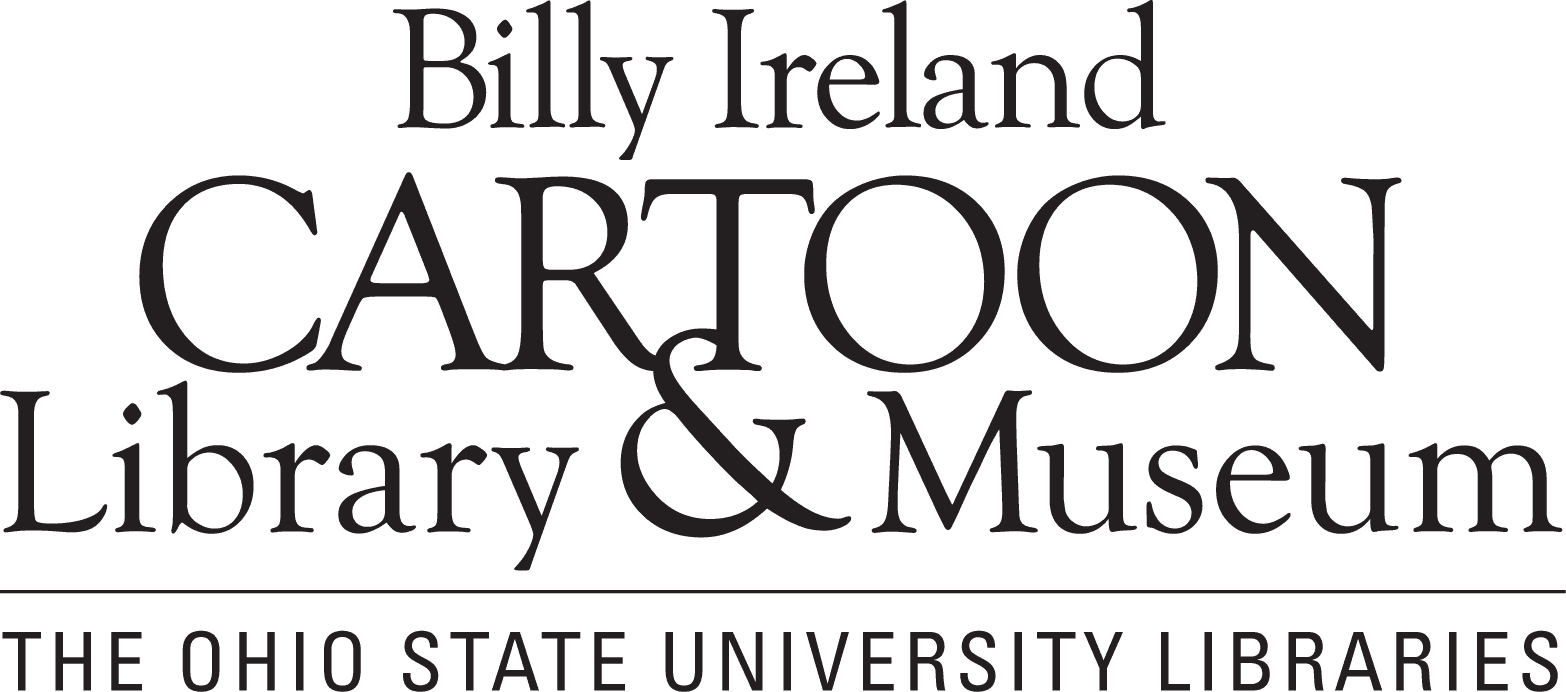Frank Santoro is a cartoonist from Pittsburgh, Pennsylvania where he lives and works, and was the recipient of the 2018 Lucy Shelton Caswell Research Award. He is the author of Storeyville, Pompei and most recently Pittsburgh from New York Review Comics. His work has been exhibited at The American Academy of Arts and Letters in New York and at the National Archaeological Museum of Napoli in Italy.
Below, Santoro reflects on his time spent researching at the Billy Ireland Cartoon Library & Museum for his recently debuted project, CANIFFER.
Hi my name is Frank Santoro and I am studying the foundational collections of the Billy Ireland Cartoon Library & Museum (BICLM) at The Ohio State University. I am an author, a cartoonist, and a painter. I had the honor of receiving a research grant to study at the BICLM, and I’d like to write a little about my experience.
I also teach the discipline of making comics and have set up my own correspondence course for cartooning. I modeled my school on the Landon School of Cartooning which originated in Cleveland, Ohio. I am from Pittsburgh Pennsylvania, and I have always been fascinated by regionalist art in America from the last 150 years or so. I think there is a strong regionalist voice in the Ohio Valley and I set out to map that lineage through my research at the BICLM. I am attempting to pass on the traditions laid down by the likes of Billy Ireland, Edwina Dumm, Charles Burchfield, Milton Caniff, Noel Sickles, and many other artists who are from Ohio and the tri-state area.
I’d like to speak for the authors, the cartoonists, painters and poets who participate in the oral history of art but who may not publish papers or even have a blog. We love to study, to do research, to compare notes. Most cartoonists aren’t scholars until our obsessive research turns us into an expert or a scholar, or someone calls us one. I was doing research for my fanzine ComicsComics and also for The Comics Journal when I heard about the Lucy Shelton Caswell Research Award. I mean, I was in the BICLM already pulling boxes out of the Milton Caniff collection when I read the announcement. I thought “why not” and applied. I want to continue to study what I call the Ohio Naturalist School. And here I am. I was shocked to receive the award. Very humbled. Like I say, I’m not an academic. No degrees. Art school dropout. However, I’m a cartoonist and I like participating in the oral history of my chosen field. And I think I have a lot to share. Connections between things not often discussed in cartooning. Like music. Did you know that a copy of the sheet music to W.C. Handy ‘s St. Louis Blues is in the Caniff archive with a dedication from the maestro to the maestro? If that ain’t American History, I dunno what is.
My experience as a Lucy Shelton Caswell Research Award winner could not have been better. I went in the summer when the students were not really around. It was hot. But cool and oasis-like in the BICLM. I had such a routine down, day after day, week after week, that I began to feel like a student. It was easy to sink into the Milton Caniff collection and feel his presence on 16th and High, at the intersection where he spent much time as an OSU student. I took a drive down to Chillicothe, Ohio to see where Billy Ireland and Noel Sickles were from. I listened to Edwina Dumm and Lucy Caswell talk about Billy Ireland on an old audiotape recording. I read old comic strips. Slowly. Letters back and forth between Billy Ireland and Noel Sickles. Did you know they wrote to each other pretending that they were soldiers in the American Civil War? I pieced their lives back together from the fragments they left. And what fragments! How lucky we are to have this public institution which exists in order to let anyone participate in this History.It really is hard to grasp how vast the holdings are until you spend time there. And how different it is to participate in Art History in real time. Winsor McCay next to Rory Hayes in the backroom hanging out. Like students in one big school.
CANIFFER is my working manuscript for my research about what I call the Ohio Naturalist School. An unadorned love letter to Milton Caniff, Noel Sickles, Billy Ireland, Edwina Dumm, and C.N. Landon amongst others. I just want to use analog serial means to make inroads towards a big picture study on these great artists. I feel most comfortable using the photocopied fanzine as a platform above all else. Eventually, it’ll be digitized but until then it is a typewriter and a photocopy machine. It’s eccentric but using analog means also lets me feel closer to the time period I am studying.
Thank you to Jenny Robb and Caitlin McGurk. And special thanks to Susan Liberator. And the staff at the front desk of the BICLM. (And thank you to Lucy Caswell and Tom Spurgeon RIP)
- Caniffer issues 1-3 (click to enlarge)
- Caniffer issue no. 1, detail (click to enlarge)
- Caniffer issue no. 2, detail (click to enlarge)
- Caniffer issue no. 3, detail (click to enlarge)













Recent Comments